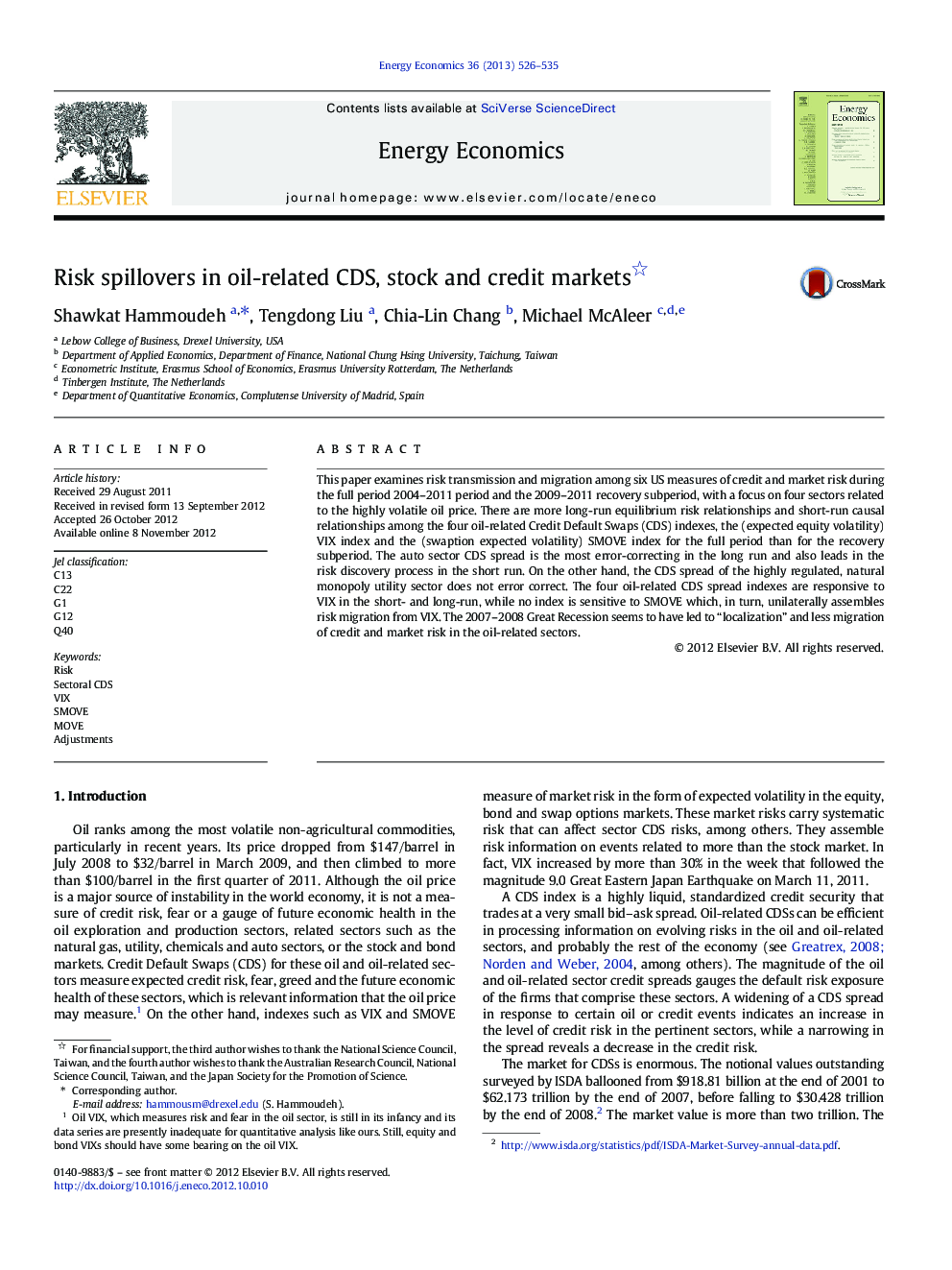| کد مقاله | کد نشریه | سال انتشار | مقاله انگلیسی | نسخه تمام متن |
|---|---|---|---|---|
| 5065173 | 1476727 | 2013 | 10 صفحه PDF | دانلود رایگان |

This paper examines risk transmission and migration among six US measures of credit and market risk during the full period 2004-2011 period and the 2009-2011 recovery subperiod, with a focus on four sectors related to the highly volatile oil price. There are more long-run equilibrium risk relationships and short-run causal relationships among the four oil-related Credit Default Swaps (CDS) indexes, the (expected equity volatility) VIX index and the (swaption expected volatility) SMOVE index for the full period than for the recovery subperiod. The auto sector CDS spread is the most error-correcting in the long run and also leads in the risk discovery process in the short run. On the other hand, the CDS spread of the highly regulated, natural monopoly utility sector does not error correct. The four oil-related CDS spread indexes are responsive to VIX in the short- and long-run, while no index is sensitive to SMOVE which, in turn, unilaterally assembles risk migration from VIX. The 2007-2008 Great Recession seems to have led to “localization” and less migration of credit and market risk in the oil-related sectors.
⺠We examine migration and transmission of U.S. credit and market risks. ⺠We concentrate on credit default swaps in four oil-related sectors. ⺠The market risks are captured by the S&P VIX and SMOVE indexes. ⺠Short- and long-run risk relationships exist among CDS indexes and financial risk variables. ⺠The results hold for the full period than for the post-crisis recovery subperiod.
Journal: Energy Economics - Volume 36, March 2013, Pages 526-535